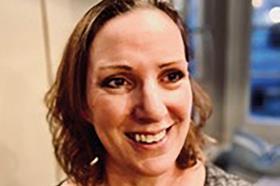There is a presumption in medico-legal practice that the provision of intensive and longstanding therapy regimes is usually a good thing for a child who has suffered a brain injury/clinical negligence. We challenge that and ask that those managing such claims, as well as the therapists themselves, take a more holistic view of the child’s needs and, in particular, their need to still have a ‘childhood’, however much it has been altered by what has happened to them.


Within medico-legal casework the purpose of compensation and rehabilitation is restitutio in integrum, or restoration of an injured party to their uninjured state as far as possible. As such care and therapy elements for the child’s lifetime usually make up the bulk of the claim, and there are potential incentives to maximise this element. But can such intensive regimes have a negative impact on children and their families?
Parents are often given messages that ‘the more therapy the better’ and that NHS underfunding impacts on statutory services’ capacity to provide appropriate care, so that it must be funded privately. It may not be made clear to parents that NHS therapy provision might be limited by the lack of evidence of effectiveness rather than capacity or cost.
When children suffer a brain injury, the recovery process throws up many unknowns and causes great uncertainty for parents. They are vulnerable and searching for answers and any cause for optimism.
It is difficult in litigation for expert witnesses to challenge the provision of the treating team. The therapists, often privately funded, on the claimant (child) side are often assumed to be the ‘good guys’ who have the child’s interests at heart, with the defendant’s team as the ‘bad guys’ trying to wriggle out of obligations and keep costs down. Parents may not be adequately advised that just because equipment/therapy exists does not mean that it is appropriate.
Quality control and reflection on the cost/benefit of the therapy being recommended is often lacking. There is a potential conflict of interest in prescription for long-term, intensive therapy, by those benefiting financially without having to take responsibility for outcomes.
Rehabilitation involves a complex interaction between interventions directed at/for the child and other management strategies, including social and education programmes, family emotional support and community advocacy. All systematic reviews and clinical guidelines for paediatric neurodisability/neurodevelopmental conditions emphasise the importance of client-centred goals and reflect evidence for ‘task-focused interventions’. Yet therapies are often prescribed without acknowledgement of specific circumstances.
The WHO ICF-CY framework for describing disability emphasises the distinction between functioning and disability (which includes description of impairment arising from the injury), and activities and participation (which includes focus on quality of life and opportunities for inclusion in everyday activities). For many children with brain injury, changes to the actual impairment, often perceived as ‘cure’, may not be achievable, but changes to participation opportunities in school, family and community life may be both achievable and beneficial.
The ‘F’ words to be considered in rehabilitation and when working with children with disabilities include: function, family, fitness, fun, friends and future (Rosenbaum et al 2012). The provision of endless hours of therapy, delivered outside meaningful contexts, risks undermining family life and limiting activity performance and participation.
Families need support when children suffer catastrophic injuries and evidence-based therapy should be provided to optimise their subsequent development, but that provision must consider the child’s social and emotional needs and allow them to enjoy their childhood as much as possible. From the time of their injury, often birth injury, children are subjected to repeated reassessments, multiple therapy sessions each week, care support with 24-hour supervision and no time to just ‘be’. Their therapists need to consider how to help them and their families to adapt to their new condition, to make the best of their new direction and to embrace the things they can still do.
In the treating therapist reports/recommendations there should be an obligation, which would be recommended good practice, to consider a balance of evidence-base issues (comprising research findings, client opinion and expert clinical opinion) for particular therapy approaches. For children, the client-opinion aspect of the evidence-base triangle should consider the cost to the child of being subjected to hours of isolating therapy that is sometimes uncomfortable, often repetitive and removed from context, and possibly stigmatising/divisive, emphasising the message that there is something different and wrong with them.
We propose a shift within litigation to emphasise adjustment, adaptation and learning to make the best of the new normal, where there is no real expectation of the ‘cure’. Such programmes exist and are being developed. For example, the cognitive orientation to daily occupational performance and occupational performance coaching.
There is a risk that the conveyor belt of therapy, in its efforts to ‘repair’ the child, never allows them to be or do what they can or might be or do anyway. Participation may look slightly different but opening up opportunities to engage in meaningful life experiences, that incorporate the emotional and social needs of the child with their family, are of as much if not more importance in the longer term.
We do not seek to criticise therapy provision but to advocate for the child in these cases to make sure decisions really are made in the best interests of the child and family.
Dr Jane Hood is a consultant paediatric neuropsychologist and educational psychologist, and Dr Dido Green is a professor in occupational therapy. Dr Katie Price, a speech and language therapist, also co-authored this article































No comments yet